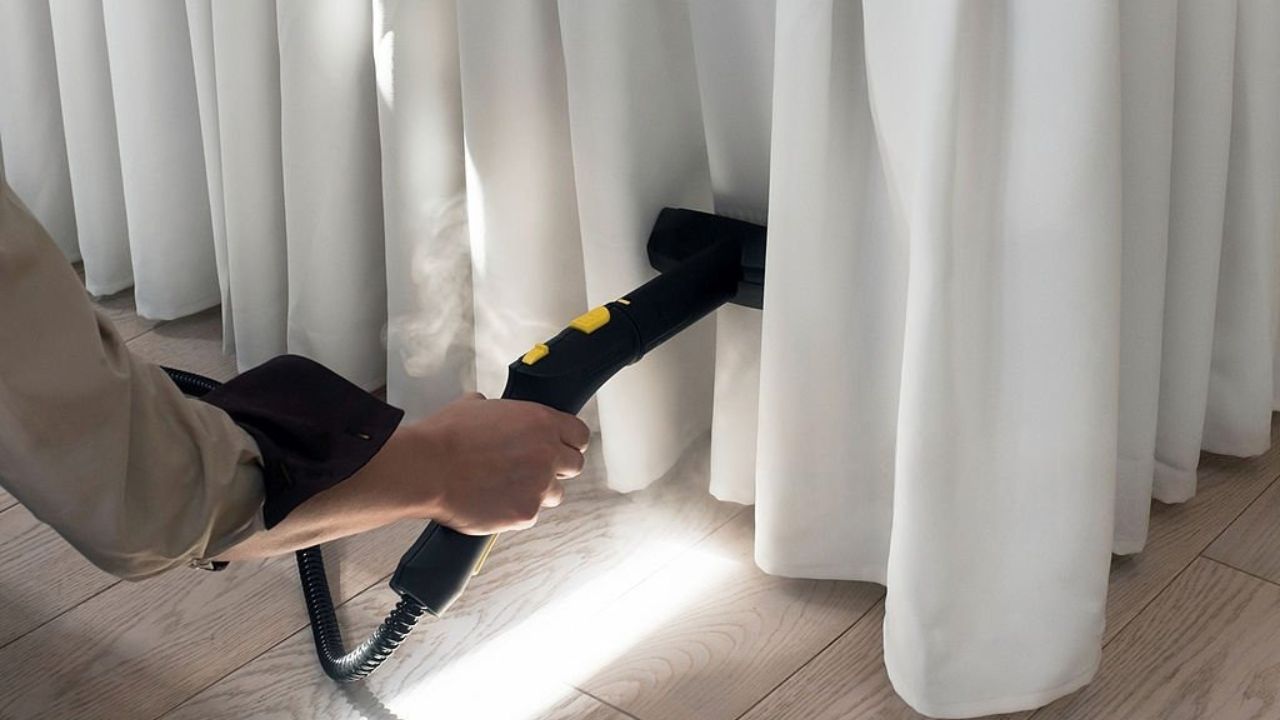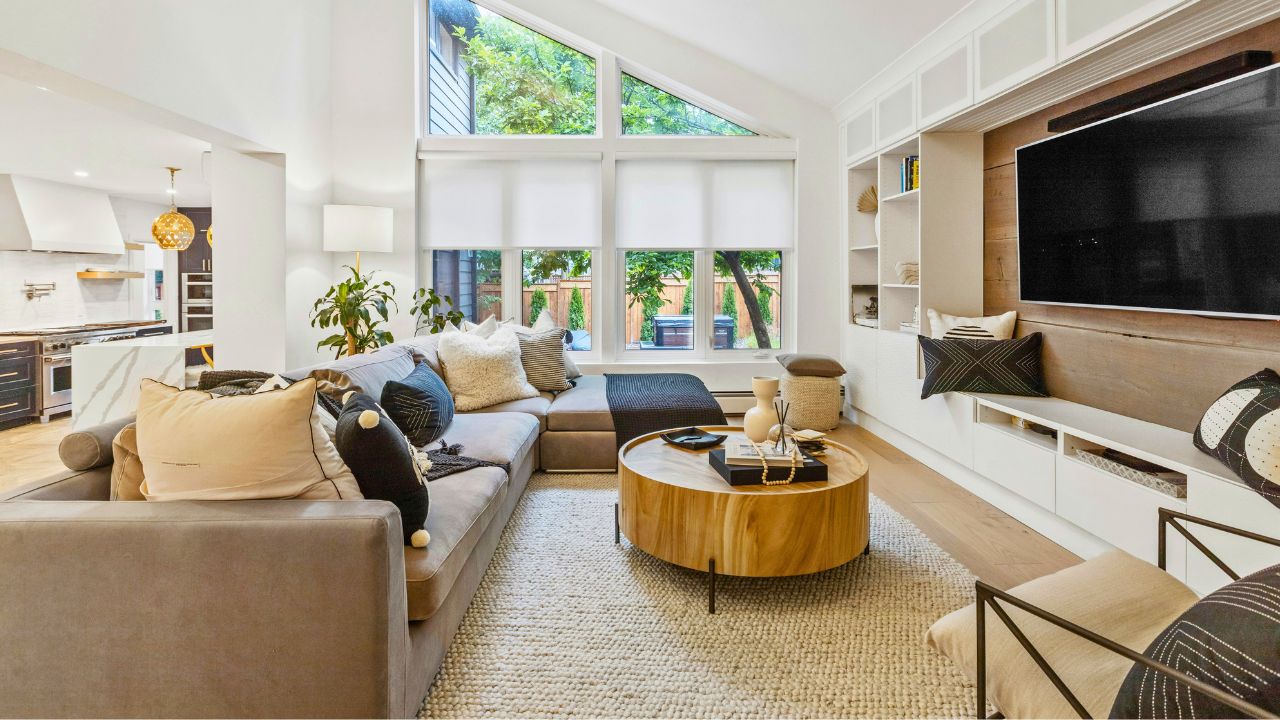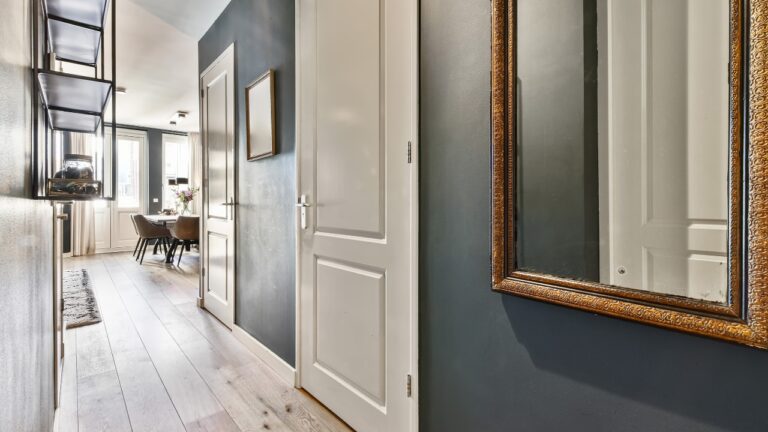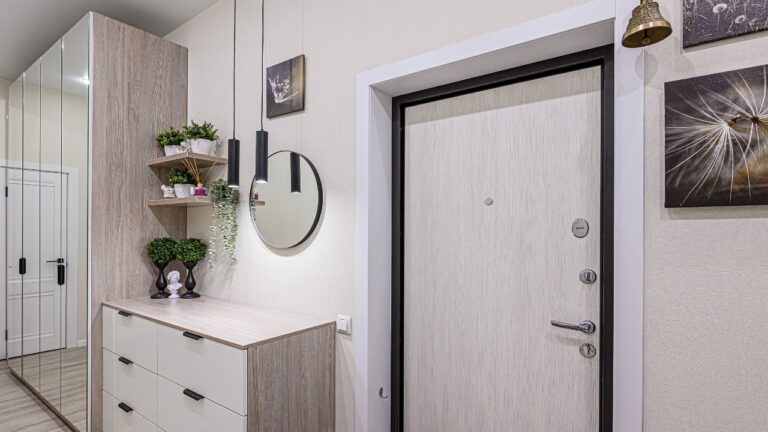Your home tells a story—make sure it says “intentional” and not “last minute”
Every choice in your house adds to a message. Sometimes that message wanders. You bought a great sofa but kept the tiny rug. You hung curtains too low. You loved a bold cabinet pull, then mixed in three other metals. None of those choices are “wrong,” but together they read as rushed.
You don’t need to start over. You need alignment. Here’s how to tighten the story your home is telling so it feels consistent from room to room.
Start with a three-part style sentence
Write one short line that defines your house: “Calm neutrals, warm wood, and clean lines.” Or “Light walls, black accents, practical fabrics.” Use that sentence as a filter before you buy anything. If a piece doesn’t fit, skip it or place it in a closed room where it won’t break the flow.
Do this: Put the sentence on a sticky note in your wallet or notes app. Check it before clicking “buy.”
Fix sightlines first
The story your home tells is shaped by what you can see at the same time. Stand at the entry and look toward the main living area. Are the heights balanced? Are colors fighting? If a hallway has bright white trim and the living room has creamy trim, repaint one so they match. If one room has three wood tones and the next room has one, edit the busier space.
Do this: Choose the most visible sightline and correct one mismatch per week—color, finish, or scale.
Align scale and proportion
If you’ve upgraded seating, match the rug and art scale to it. A large sofa needs a large rug and art with presence. Small art above a big piece of furniture reads as a placeholder. Swap for one larger frame or a balanced grid with consistent spacing.
Do this: Use painter’s tape to mock art size on the wall before you buy. Aim for two-thirds the width of the furniture below.
Pick a fabric strategy you can maintain

Intentional homes aren’t precious—they’re prepared. Choose fabrics that can handle your life: performance upholstery for family rooms, washable cotton for everyday throws, leather or tight weaves for dining seats. When cushions stay clean and plump, the room holds together day to day.
Do this: Set a quarterly wash and steam schedule for slipcovers, throws, and drapes. Maintenance is part of the plan.
Limit decor moves per room
A room doesn’t need every idea you like. Choose one strong moment—a stone fireplace, a dark built-in, a patterned rug—and let the rest support it. When everything competes, the story gets loud and fuzzy.
Do this: Remove one decorative layer from the most cluttered surface in each room. Keep only what serves the anchor idea.
Make function visible
A clear drop zone, a calm coffee table, and a predictable place for remotes read as “intentional.” You’re not hiding real life; you’re organizing it. Use trays to corral small items and baskets to hide “always out” gear. Label closed storage so family members can keep the system alive.
Do this: Create a five-item rule for your coffee table: one tray, one candle, one book stack, one small object, and open space for cups.
Keep lighting consistent

Nothing says “last minute” like mixed bulbs and bright overheads at night. Add lamps where people sit, match color temperature, and use dimmers. Turn on lamps before guests arrive so the house feels settled.
Do this: Build a “lights on” routine in the evening—front porch, entry lamp, living lamps, powder room. It takes two minutes and changes the mood.
Edit, then add
Before buying more, remove what doesn’t fit your sentence. This step is free and has the biggest impact. Once the noise is gone, the right pieces are easier to find and you’ll avoid impulse buys that derail the plan.
Do this: Create a donation tub and keep it accessible. When something feels off three days in a row, it’s probably not right for the room.
Like Fix It Homestead’s content? Be sure to follow us.
- I made Joanna Gaines’s Friendsgiving casserole and here is what I would keep
- Pump Shotguns That Jam the Moment You Actually Need Them
- The First 5 Things Guests Notice About Your Living Room at Christmas
- What Caliber Works Best for Groundhogs, Armadillos, and Other Digging Pests?
- Rifles worth keeping by the back door on any rural property
*This article was developed with AI-powered tools and has been carefully reviewed by our editors.







